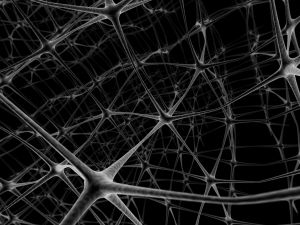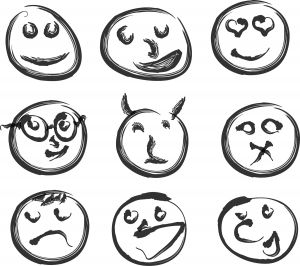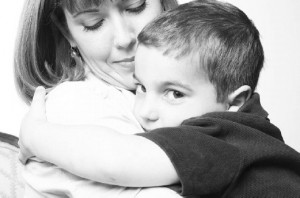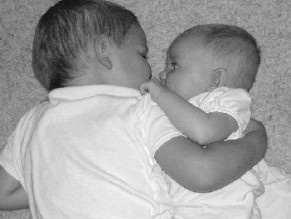From API’s Publications Team
 A study published in the Development Pyschobiology journal involving the care of orphaned chimpanzees could help change the way human orphans are cared for.
A study published in the Development Pyschobiology journal involving the care of orphaned chimpanzees could help change the way human orphans are cared for.
According to an article in the European Union’s CORDIS News, “Chimp Study Highlights Importance of Emotional Care in Childhood,” orphaned chimps that were mothered by humans fared better emotionally than chimps raised in a more institutional setting.
The study, which was conducted at the Yerkes National Primate Research Center’s Great Ape Nursery in Atlanta, Georgia USA, was funded by the FEELIX GROWING project. In the study, the chimps that received emotionally responsive care — which included time with human caregivers doing grooming, playing, and other interactions — were happier, smarter, and more emotionally adjusted than chimps given standard care, which focused solely on meeting physical needs.
The mothered chimps were less easily stressed, less often attached to comfort items such as blankets, had healthier relationships with their caregivers, and were more cognitively advanced.
The insitutionalized chimps were more likely to display disorganzied attachment behaviors such as rocking or clutching a comfort item when distressed instead of turning to the caregiver. Because similar behaviors have been noticed in human orphanages and with neglected and abused children, the study’s authors believe theproposed strategies of increasing emotionally sensitive caregiving to orphaned chimps can be translated to orphaned humans.
“The attachment system of infant chimpanzees appears surprisingly similar to that found in human infants,” said Professor Kim Bard of the University of Portsmouth in the United Kingdom. “Early experiences, either of warm, responsive caregiving or of extreme deprivation, have a dramatic impact on emotional and cognitive outcomes in both chimpanzees and humans. Parental sensitivity is an important factor in human infant development, and it would seem the same is true for great apes, as well.”
To read the entire article, go to http://cordis.europa.eu/fetch?CALLER=EN_NEWS&ACTION=D&SESSION=&RCN=30417.

 According to an article on Guadian.co.uk, “Postnatal Depression and Your Baby,” the length of a new mother’s postpartum depression has a strong tie with the difficulties she’ll experience in establishing a close attachment with her baby.
According to an article on Guadian.co.uk, “Postnatal Depression and Your Baby,” the length of a new mother’s postpartum depression has a strong tie with the difficulties she’ll experience in establishing a close attachment with her baby. A January 6 article in the United Kingdom’s Nursery World magazine, “A Unique Child: Attachment – Practice in Pictures – A Sense of Security,” illustrates the difference between a securely and insecurely attached child.
A January 6 article in the United Kingdom’s Nursery World magazine, “A Unique Child: Attachment – Practice in Pictures – A Sense of Security,” illustrates the difference between a securely and insecurely attached child. My experience as a single attachment parent started when my son was 19 months old and I was seven and one-half months pregnant with my daughter.
My experience as a single attachment parent started when my son was 19 months old and I was seven and one-half months pregnant with my daughter. As the lone parent of two little girls four years old and two years old, one of the hardest things I find about doing it on my own is the fact that I am constantly “on duty.”
As the lone parent of two little girls four years old and two years old, one of the hardest things I find about doing it on my own is the fact that I am constantly “on duty.” I remember my father saying to me in 1968, “You know this business about the instinct for a small child to stay close to its mother, and the intimate bond they form? Well, I believe that it’s the same instinct to form close bonds that stays with us all our lives, and we, as adults, suffer the same feelings of loss when a loved one dies, as a child feels who’s lost its mother.”
I remember my father saying to me in 1968, “You know this business about the instinct for a small child to stay close to its mother, and the intimate bond they form? Well, I believe that it’s the same instinct to form close bonds that stays with us all our lives, and we, as adults, suffer the same feelings of loss when a loved one dies, as a child feels who’s lost its mother.” The term “secondary attachment” can be interpreted erroneously to mean “less important,” but Attachment Parenting International refutes this definition.
The term “secondary attachment” can be interpreted erroneously to mean “less important,” but Attachment Parenting International refutes this definition. All babies cry. And all parents are continually striving to find the best way to respond to those cries.
All babies cry. And all parents are continually striving to find the best way to respond to those cries.